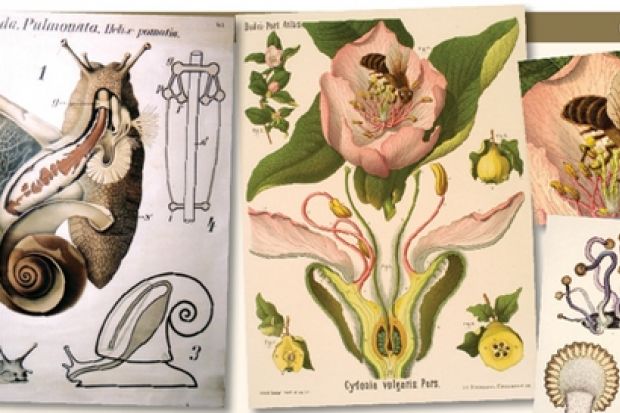The anatomy of the Roman snail is explained in one of the 39 wallcharts by Paul Pfurtscheller (1855-19), most of them published in 1926. The quince flower being pollinated by a bee comes from a series on plant systematics created by Arnold Dodel-Port and his wife Carolina between 1878 and 1883.
The chart depicting the ergot fungus was based on research by Leopold Kny (1841-1916) and forms part of a series issued between 1874 and 1911, along with a 554-page explanatory textbook. So precise were Kny's drawings that they were still being used for educational purposes more than a century after the project began.
Send suggestions for this series on the treasures, oddities and curiosities owned by universities across the world to matthew.reisz@tsleducation.com.
Register to continue
Why register?
- Registration is free and only takes a moment
- Once registered, you can read 3 articles a month
- Sign up for our newsletter
Subscribe
Or subscribe for unlimited access to:
- Unlimited access to news, views, insights & reviews
- Digital editions
- Digital access to THE’s university and college rankings analysis
Already registered or a current subscriber? Login
